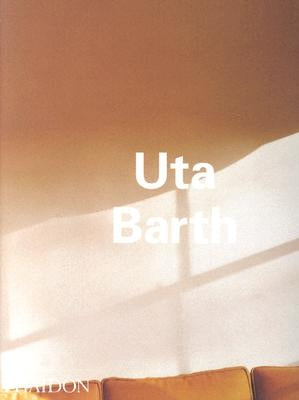Before you leave...
Take 20% off your first order
20% off
Enter the code below at checkout to get 20% off your first order
Discover summer reading lists for all ages & interests!
Find Your Next Read

German-born, American-based artist Uta Barth (b.1958) is among the key recent figures who have brought photography to the prominent position once occupied by painting. Her photographs of interior and exterior, urban and natural environments capture fleeting moments as if glimpsed out of the corner of one's eye, where we become aware of the beauty of everyday light, space, texture and luminous surfaces.
Working in broad series, each body of work explores different details of our surroundings, such as the corner of a room (Ground #38, 1994), the headlights of a passing car (Field #3, 1995), bare trees seen through a window (white blind [bright red], 2002). A kind of 'portrait photography, but with the sitter removed', Barth's work focuses not on the subject of the photograph, but on the subtle play of light and shade on planes and surfaces: that is, the phenomena of vision itself.
Often one element, such as a few leaves on a branch, is brought into focus while all else is dissolved and diffused, suggesting the atmospheric work of painters of the past, from Vermeer to Turner, or suggesting the background ambience of film. Barth's work has been exhibited at museums around the world, including the Museum of Modern Art, New York; Tate Modern, London; and the Solomon R. Guggenheim Museum, New York.
In her Survey, Pamela M. Lee examines all the key series that have marked the artist's work, among them Ground (1994-7), Field (1995-6), nowhere near (1999), ... and of time (2000) and white blind (bright red) (2002). In the Interview curator Matthew Higgs discusses the artist's earliest introduction to photography and her work's possible misinterpretations as 'sentimental' or 'painterly'. Artist and critic Jeremy Gilbert-Rolfe focuses on the three-panel work Untitled 98.5 (1998), a turning point in her oeuvre. For her Artist's Choice Barth has selected extracts from Joan Didion's novel Democracy (1984) that reflect the visual nuances of her own work. Artist's Writings include a new text by the artist that mirrors her unique observations on vision, perception and photography.Pamela M Lee is Associate Professor of Art History at Stanford University, California, and author of Object to Be Destroyed: The Work of Gordon Matta-Clark (2000) and Chronophobia: On Time in the Art of the 1960s (2004), both published by MIT Press. Her writings have appeared in art journals such as October, Artforum and Parkett.
Matthew Higgs is a British artist, writer and curator now based in New York, where he is Curator and Director of White Columns. Some of the exhibitions he has organized include 'The Early Show', White Columns (2006); 'To Whom It May Concern', CCA Wattis Instute for the Arts, San Francisco (2002); 'Protest & Survive', Whitechapel Art Gallery, London (2000) and 'British Art Show 5', which toured the UK in 2000.
Jeremy Gilbert-Rolfe is Chair of the MFA programme at the Art Center, Pasadena, and has contributed to such journals as Bomb, Critical Inquiry and Parkett. His books include Beyond Piety (1995), Beauty and the Contemporary Sublime (2000) and Frank Gehry: The City and Music (with Frank Gehry, 2001).
Thanks for subscribing!
This email has been registered!
Take 20% off your first order
Enter the code below at checkout to get 20% off your first order